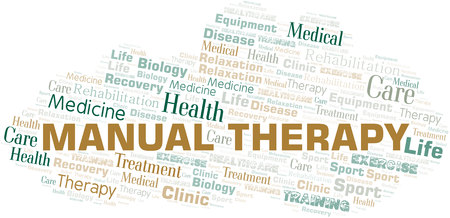
Fellowship in Obstetrics and Gynaecological Physiotherapy FOGP

Description
A. Obstetrics and Gynaecological Conditions –
Basics Anatomy and Physiology,
Developmental anatomy: Embryology & fetal development.
General female anatomy & Physiology:
Reproductive system
Female breast.
Female abdomen.
Female bony pelvic
Biomechanics of the female pelvic:
Reproductive tract.
Abdominal muscle.
Endocrine physiology related different phase of women’s life.
Puberty and menarche
Physiology of Menstrual cycle
Review of pelvic anatomy
B Clinical Obstetrics:
Physiotherapy assessment in obstetrics:
Antenatal assessment.
Assessment during labour.
Postnatal assessment.
Assessment includes:
Common musculoskeletal problem.
Diastasis recti.
Pelvic floor muscle function.
Bowel & bladder dysfunction.
Pregnancy detection methods and diagnostic test.
Physiological changes during pregnancy.
Common complications & discomforts during pregnancy: High risk pregnancy.
Common syndrome during pregnancy.
Psychological and emotional aspects of pregnancy
Stages of Labour & its mechanism.
Complication during labour.
Assisted delivery :
Episiotomy
Forceps delivery.
Caesarian section.
Postnatal phase Puerperium & its physiological changes. Common problem & complications.
Different methods of Contraception.
C] Clinical Gynaecology:
Physiotherapy assessment in gynaecology:
Physiotherapy Assessment of different gynaecological condition.
Pre & Post operative assessment of gynaecological surgery.
Physiotherapy assessment of Bladder and Bowel Dysfunction.
Assessment includes:
Pelvic floor muscle assessment.
Assessment of pain.
Diagnostic tools used in gynaecological assessment.
Examination of breast.
Puberty & common syndrome during this phase.
Polycystic ovarian syndrome
Gynaecological infections.
Displacement, Prolapse and pelvic floor dysfunction: surgical repair for it.
Cysts & new growth.
Cancer of the reproductive system, Breast cancer: Surgical procedures for it.
Infertility.
Menopause: Physiological changes and its consequences.
Gynaecological surgeries including exisitional and repair surgeries.
D: Physiotherapy Techniques in :
Obstetrics:
Antenatal exercise in pregnancy.
Concept, principles and organisation of antenatal exercises.
PT management of common syndrome of pregnancy.
Role of PT in antenatal complication.
Ergonomics during childbearing phase.
Role of physiotherapy in high risk pregnancy.
Role of physiotherapy during Labor and its management.
PT management of immediate and late postnatal complications.
Concepts, principles and organisation of postnatal classes.
Gynaecology:
Exercise for an adolescent female.
Principles and techniques of application of pelvic floor exercises.
Use of electrotherapy modalities in training Pelvic floor muscles. a. Therapeutic electrical stimulation. & Biofeedback.
Physiotherapy management in Pelvic floor dysfunction.
Prevention and Physiotherapy intervention in Osteoporoses.
Breast cancer Physiotherapy & rehabilitation.
Physiotherapy management of Lymphedema after mastectomy.
Physiotherapy intervention before and after gynaecological surgeries.
Teaching, structure and assessment
This course runs through 6 months and is delivered through a combination of Online,face-to-face lectures, workshops and seminars. There’ll also be online learning tests which you’ll need to complete.
LEARNING OUTCOME
On completion of the subject, student will have the opportunity to develop the following generic skills-
An advance understanding of the changing knowledge base in this clinical area
Plan, deliver and evaluate appropriate exercise programs for specific women’s groups of the community.
Understand the impact of exercise on the altered physiology, patho physiology and psychology of pregnancy, menopause, aging, & osteopenia/ osteoporosis.
Identify the legal and safety issue associated with leading exercise classes for women with specific physical need.
Understand the motivational and marking aspect of leading community and hospital based exercise classes.
Basics Anatomy and Physiology,
Developmental anatomy: Embryology & fetal development.
General female anatomy & Physiology:
Reproductive system
Female breast.
Female abdomen.
Female bony pelvic
Biomechanics of the female pelvic:
Reproductive tract.
Abdominal muscle.
Endocrine physiology related different phase of women’s life.
Puberty and menarche
Physiology of Menstrual cycle
Review of pelvic anatomy
B Clinical Obstetrics:
Physiotherapy assessment in obstetrics:
Antenatal assessment.
Assessment during labour.
Postnatal assessment.
Assessment includes:
Common musculoskeletal problem.
Diastasis recti.
Pelvic floor muscle function.
Bowel & bladder dysfunction.
Pregnancy detection methods and diagnostic test.
Physiological changes during pregnancy.
Common complications & discomforts during pregnancy: High risk pregnancy.
Common syndrome during pregnancy.
Psychological and emotional aspects of pregnancy
Stages of Labour & its mechanism.
Complication during labour.
Assisted delivery :
Episiotomy
Forceps delivery.
Caesarian section.
Postnatal phase Puerperium & its physiological changes. Common problem & complications.
Different methods of Contraception.
C] Clinical Gynaecology:
Physiotherapy assessment in gynaecology:
Physiotherapy Assessment of different gynaecological condition.
Pre & Post operative assessment of gynaecological surgery.
Physiotherapy assessment of Bladder and Bowel Dysfunction.
Assessment includes:
Pelvic floor muscle assessment.
Assessment of pain.
Diagnostic tools used in gynaecological assessment.
Examination of breast.
Puberty & common syndrome during this phase.
Polycystic ovarian syndrome
Gynaecological infections.
Displacement, Prolapse and pelvic floor dysfunction: surgical repair for it.
Cysts & new growth.
Cancer of the reproductive system, Breast cancer: Surgical procedures for it.
Infertility.
Menopause: Physiological changes and its consequences.
Gynaecological surgeries including exisitional and repair surgeries.
D: Physiotherapy Techniques in :
Obstetrics:
Antenatal exercise in pregnancy.
Concept, principles and organisation of antenatal exercises.
PT management of common syndrome of pregnancy.
Role of PT in antenatal complication.
Ergonomics during childbearing phase.
Role of physiotherapy in high risk pregnancy.
Role of physiotherapy during Labor and its management.
PT management of immediate and late postnatal complications.
Concepts, principles and organisation of postnatal classes.
Gynaecology:
Exercise for an adolescent female.
Principles and techniques of application of pelvic floor exercises.
Use of electrotherapy modalities in training Pelvic floor muscles. a. Therapeutic electrical stimulation. & Biofeedback.
Physiotherapy management in Pelvic floor dysfunction.
Prevention and Physiotherapy intervention in Osteoporoses.
Breast cancer Physiotherapy & rehabilitation.
Physiotherapy management of Lymphedema after mastectomy.
Physiotherapy intervention before and after gynaecological surgeries.
Teaching, structure and assessment
This course runs through 6 months and is delivered through a combination of Online,face-to-face lectures, workshops and seminars. There’ll also be online learning tests which you’ll need to complete.
LEARNING OUTCOME
On completion of the subject, student will have the opportunity to develop the following generic skills-
An advance understanding of the changing knowledge base in this clinical area
Plan, deliver and evaluate appropriate exercise programs for specific women’s groups of the community.
Understand the impact of exercise on the altered physiology, patho physiology and psychology of pregnancy, menopause, aging, & osteopenia/ osteoporosis.
Identify the legal and safety issue associated with leading exercise classes for women with specific physical need.
Understand the motivational and marking aspect of leading community and hospital based exercise classes.
Product rating
Customer Reviews
There have been no reviews for this product.
Add your review here





















